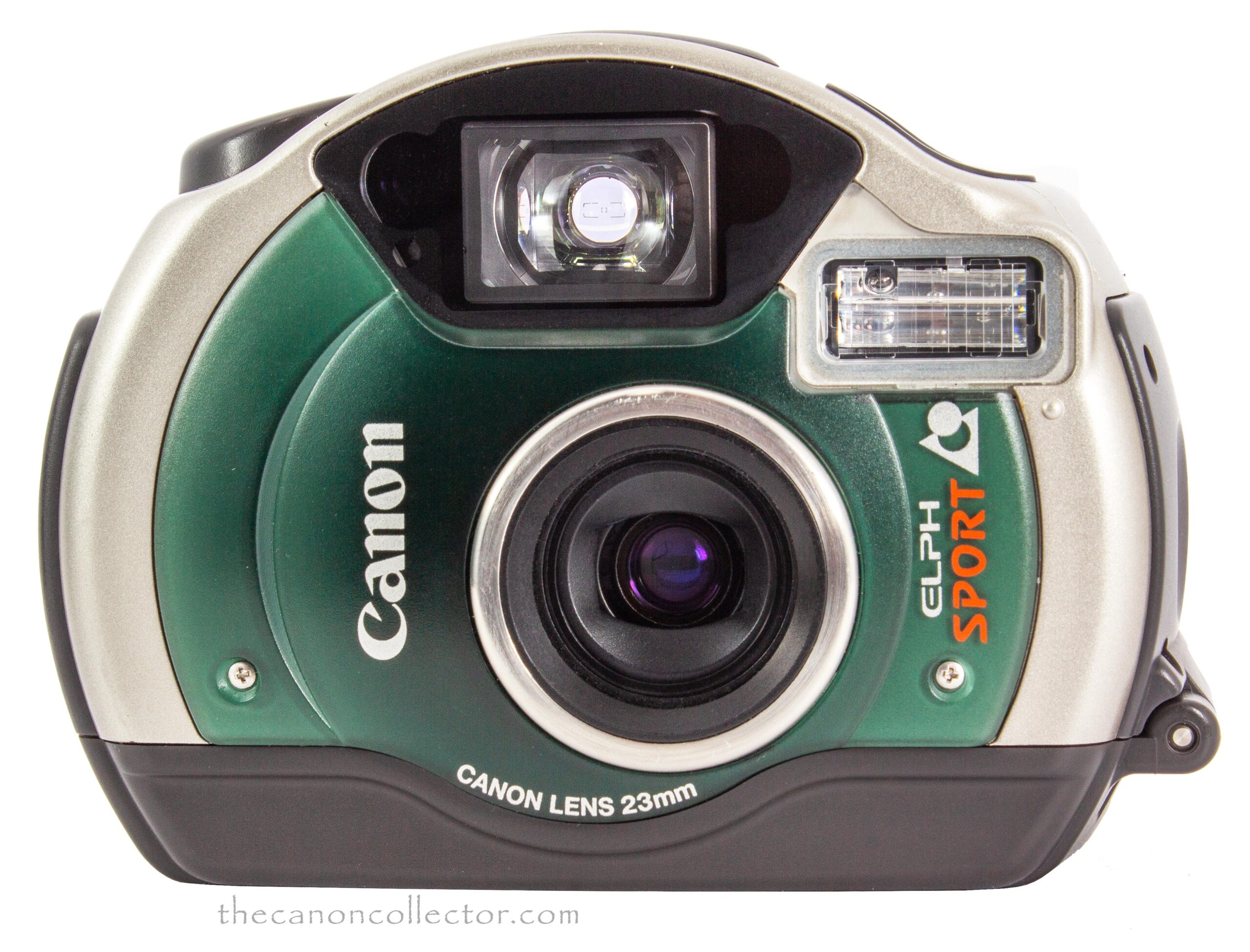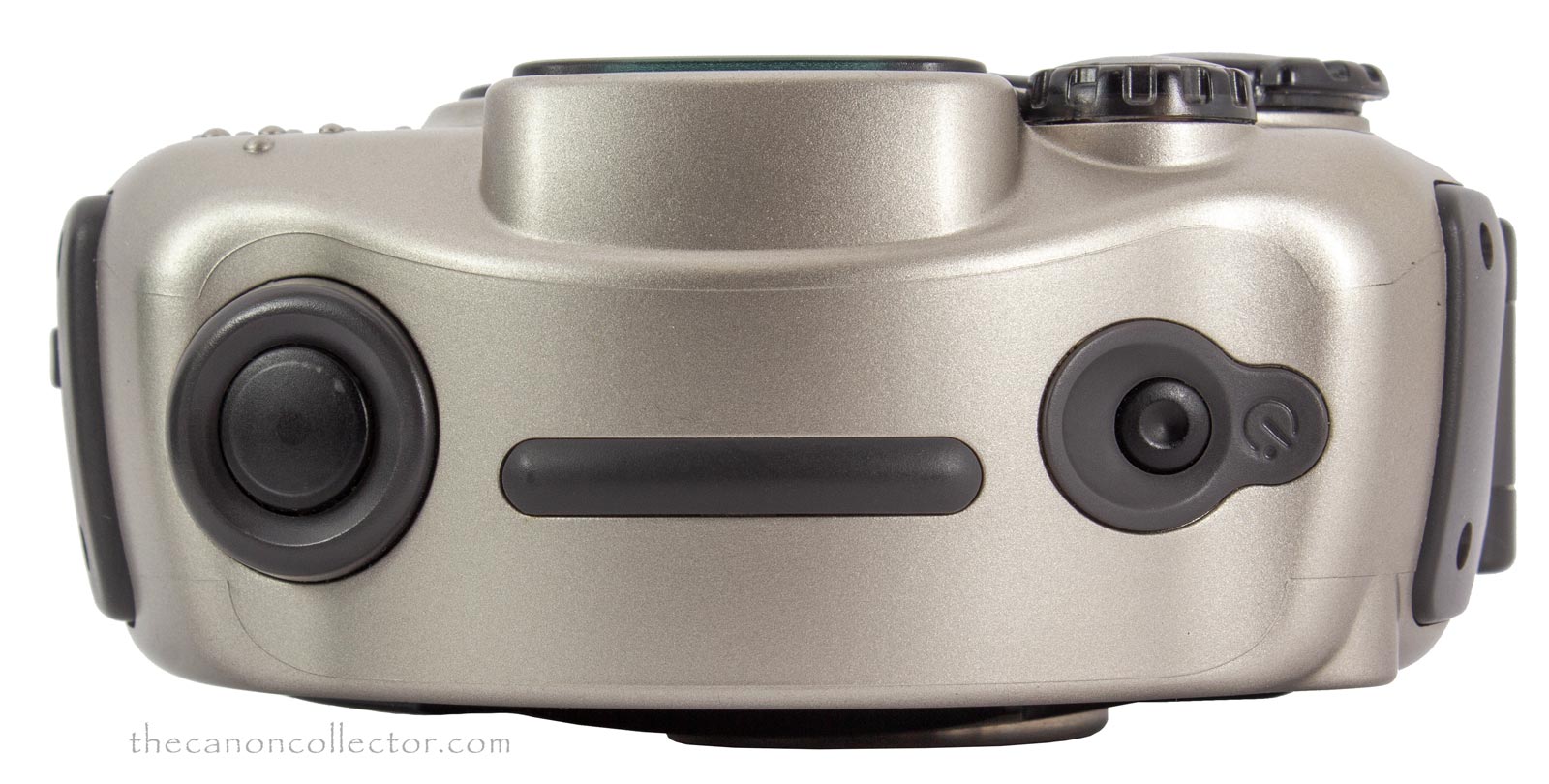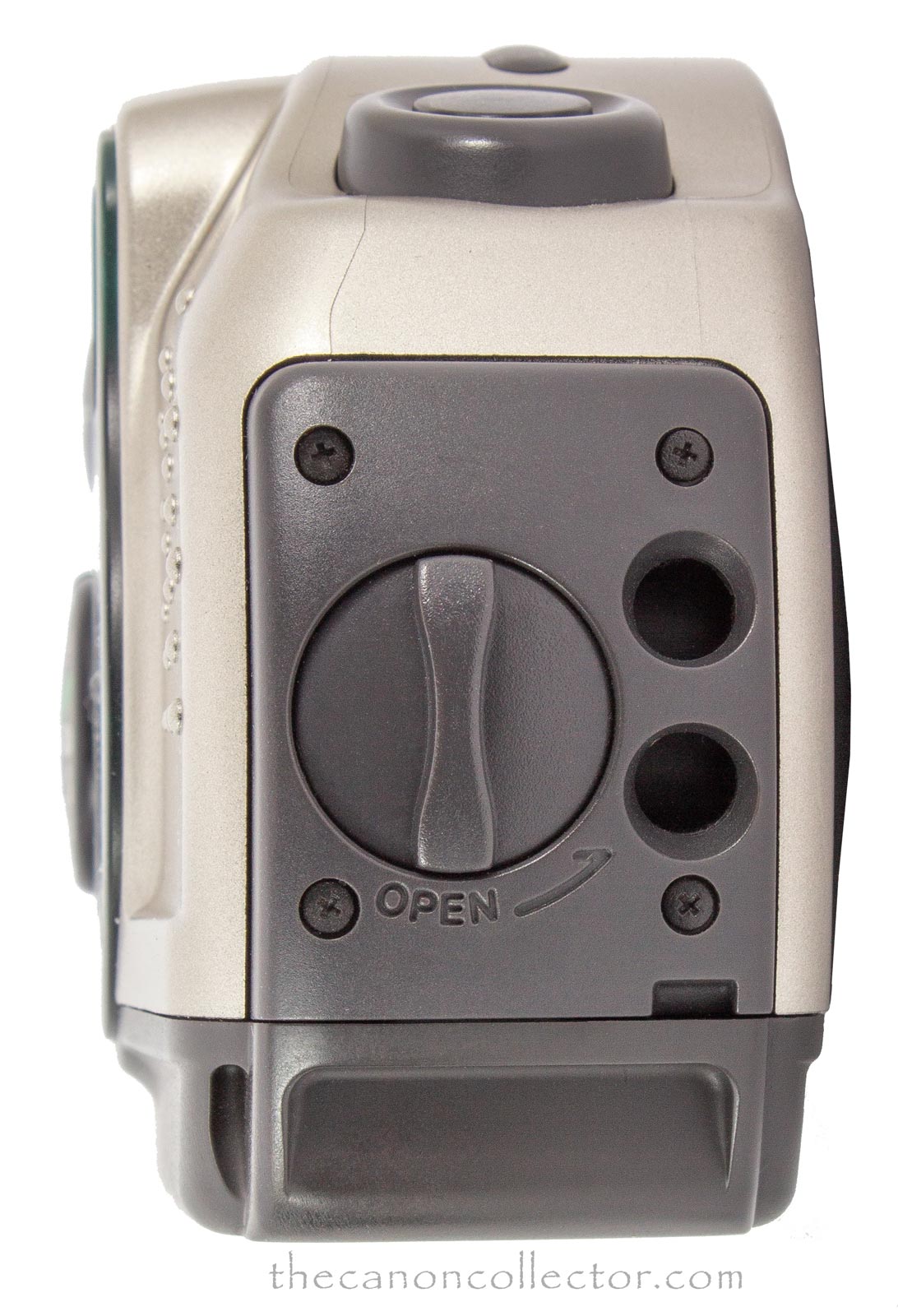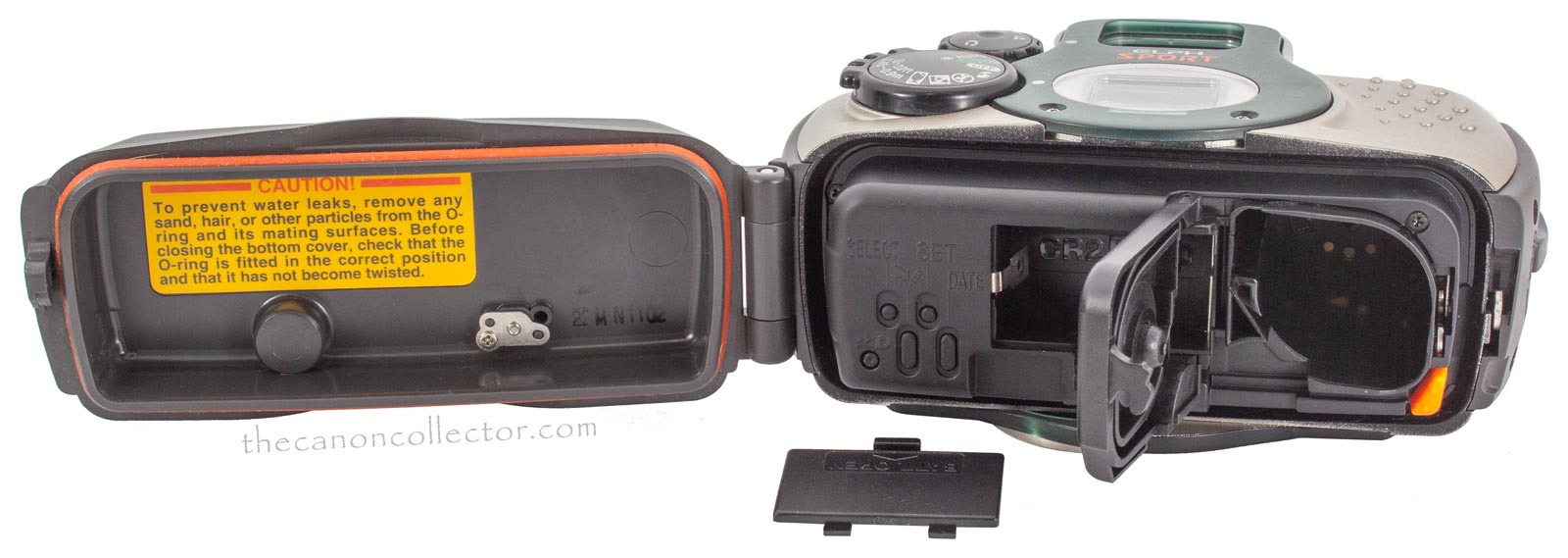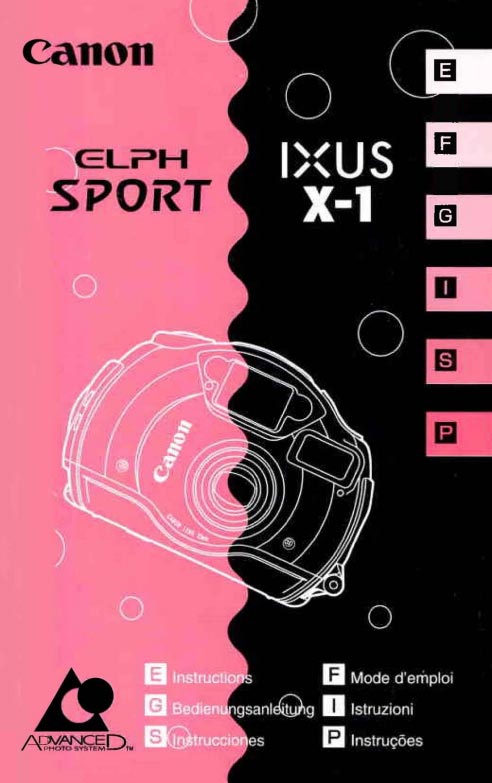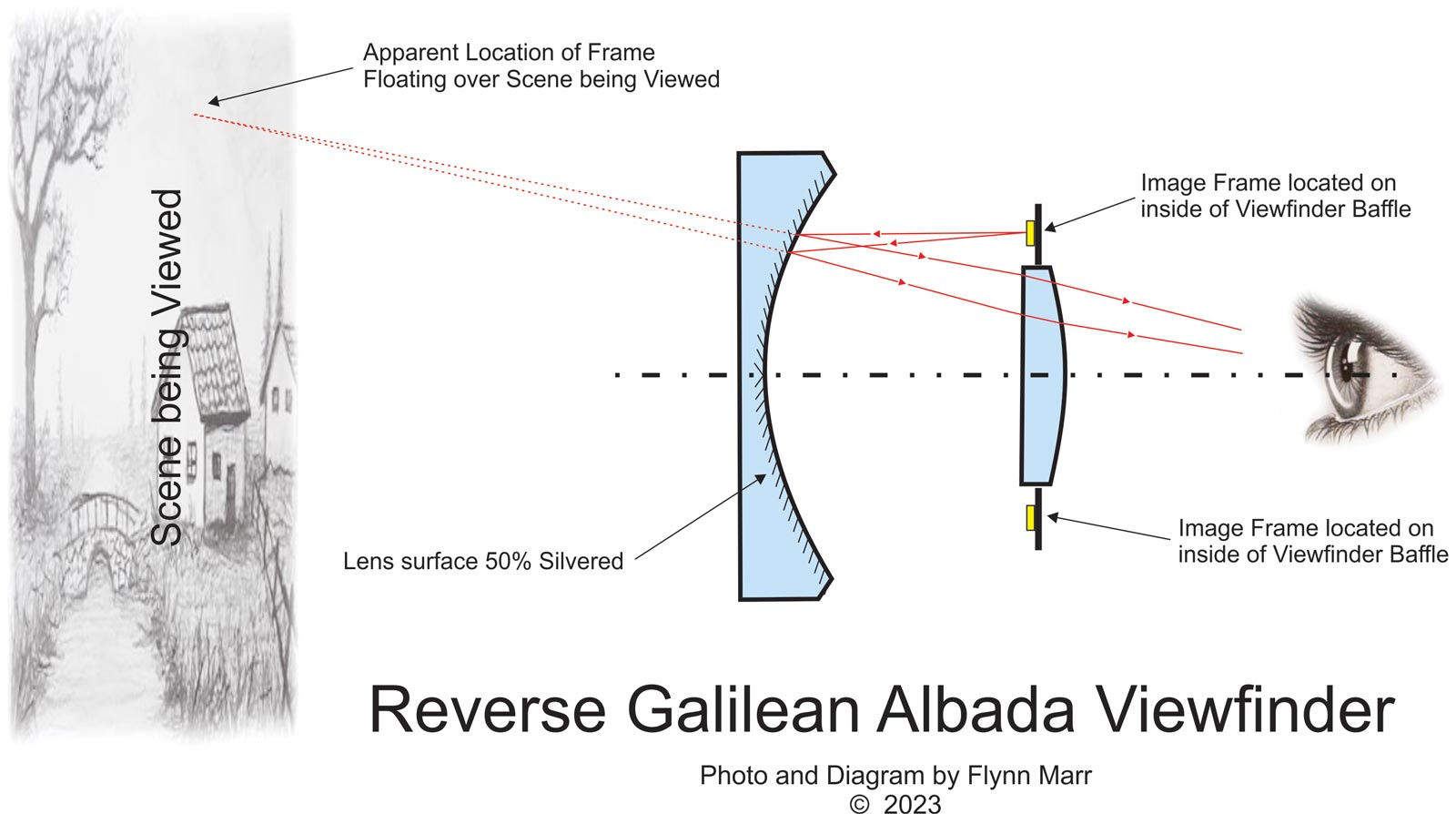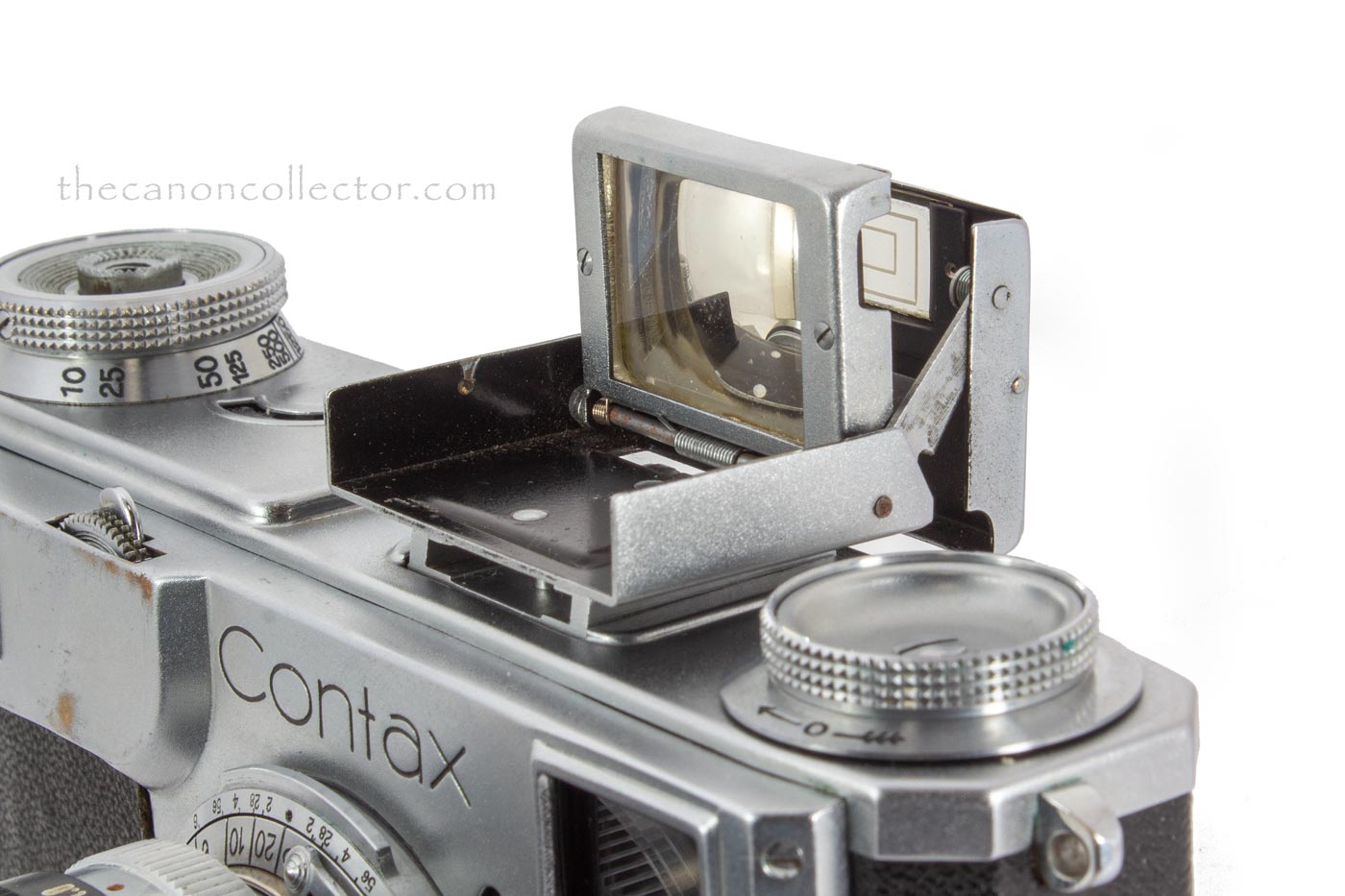This is my Elph Sport camera (Serial Number 3501620) with its carrying case and strap. The camera is watertight and needs no additional waterproof housing.
The Sport has a modern attractive look and is very pleasing to hold. The lanyard threads through the two holes visible on the end of the camera. The flash works above and below water.
The Elph Sport
Imagine it’s 1999 and you want to buy a camera
to take pictures of the family and friends.
You want something that you can take out
in the rain. And if you go to the beach
you want something you can throw on
your beach blank or even in the sand.
And if it gets dirty you want to be able to
rinse it off in the ocean and keep taking
pictures. And auto exposure and auto focus would also be nice. Well, there was a camera with these characteristics that you could have bought: the
Canon Elph Sport!
Canon introduced the Sport in November of 1999 just in time for it to be bulldozed by the digital revolution. But this was a great little camera!
It had a 23mm (29mm equivalent) f4.8
lens of 5 elements in 5 groups. It was
considered waterproof to 15 feet and,
with battery and film loaded, it would
still float.
It was autofocus above water but below
water the water absorbs the IR used
by the autofocus so it is fixed focus for .9
to 3 meters. Auto exposure works above
and below the surface.
This is a film camera using the APS film
cartridge that came out just before digital
came along. A shame because the APS
system had a lot to recommend it! Just saying!
The front of the Sport shows the really large Albada Viewfinder at the top center. The viewfinder delivers a large bright image that works well unerwater wearing a mask.
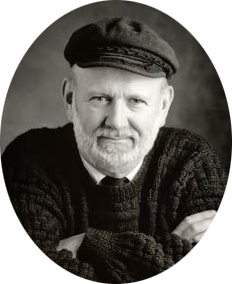
On the top of the camera on the right is the shutter button. On the left the larger button is for setting the self timer. Exposure and focus above water is automatic, so, no controls.
On the bottom there appears to be nothing. However, that is deceptive. The whole bottom is a waterproof cover that cover the doors to the battery compartment and the film compartment.
The camera has three selectable image formats which I wonder about because the only way to achieve that is to mask off sections of the image. Deleting data never seems to be a wise option to me.
Part of the APS system allows the camera to read the film speed automatically so there is no provision for that manually. The available range is ISO 25 to 1000.
Above water the auto-focus is a single central point that works from .6 meters to infinity. Because of the optical properties of water, underwater the lens is fixed focus with an advertised range of .9 to 3 meters. There is also a macro range underwater of .45 to .9 meters.
The rangefinder of the Alabada type and is of reverse Galilean construction. However, more of that below.
For the complete operating instructions have a look at the manual on the left.
The Albada Viewfinder
around the beginning of the twentieth century. It is based on a Reverse Galilean viewfinder with a clever method of projecting a frame line around the area to be recorded on the film. That is a lot to unpack and this is a good place to get into it.
When Galileo built his first telescope he used a positive lens as the objective (or front) lens and a plano-concave lens as the eyepiece. But if you turn it around you can see a reduced view through it. This means the objective is a plano-concave lens and the eyepiece is a positive lens. This is a “reverse” Galilean viewfinder. So what did Albada do with this to create his viewfinder?
In the Albada viewfinder the concave surface of the front element is partially silvered. The scene ahead of it is transmitted through the silvering but it also reflects light rays originating by the exit lens. A frame line is painted onto the inside of the light baffle around the back of the viewfinder and an image of that frame is reflected by the concave surface back to the eyepiece. The result is a frame outline that appears to float in the scene being viewed outlining the area covered by the film area. The size of the frame is determined by the characteristics of the concave surface on the back of the first lens.
It is possible to paint the frame lines right on the eyepiece lens. They will be invisible to the eye because it is too close for the eye to focus on them or even register their presence. You find this in the Leitz clip on Albada viewfinder shown below.
This is the Leitz clip-on Alibada viewfinder mounted on my pre-war Contax 2. You can see that the two frame lines are applied right on the glass of the eyepiece lens. The front lens is partially silvered so the target scene is visible through the silver. However, the lines on the eyepiece are reflected off the inner surface of the front lens and back into the eye. This results in the frame lines appearing to float over the scene in the viewfinder.
There are three main advantages to the Albada Viewfinder. The first is that the frame lines and the scene being viewed appears on the same plane of focus. This makes composing the picture more precise and natural feeling. Secondly, the position of the eye has little effect on where in the scene the viewfinder lines appear. And finally, the image extends outside the frame lines and so it is easier to follow action in the viewfinder. You can see what is coming before it enters into the image area.
Now, not all is good. Illumination for the frame lines is a problem. In the dark they are not visible and they are faint in dim light. For this reason the viewfinder is usually found in an open format such as the Zeiss one illustrated above. When enclosed the viewfinder elements tend to be large to get sufficient light onto the frame lines. For example, look at the Elph Sport!
Shooting with the Elph Sport
This camera is the first one to make me want to try shooting APS film. It feels great in the hand and I find it very appealing visually. It is a great little package. But I have never shot APS film. I have a few rolls put away somewhere or I may buy more on E-bay. Expensive, because it is getting pretty rare, but I only want a roll or two. So we will have to wait for my report on this camera.
This website is the work of R. Flynn Marr who is solely responsible for its contents which are subject to his claim of copyright. User Manuals, Brochures and Advertising Materials of Canon and other manufacturers available on this site are subject to the copyright claims and are the property of Canon and other manufacturers and they are offered here for personal use only.



